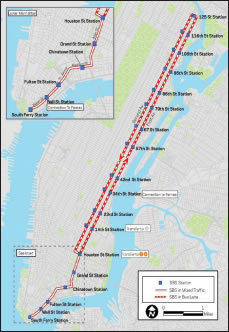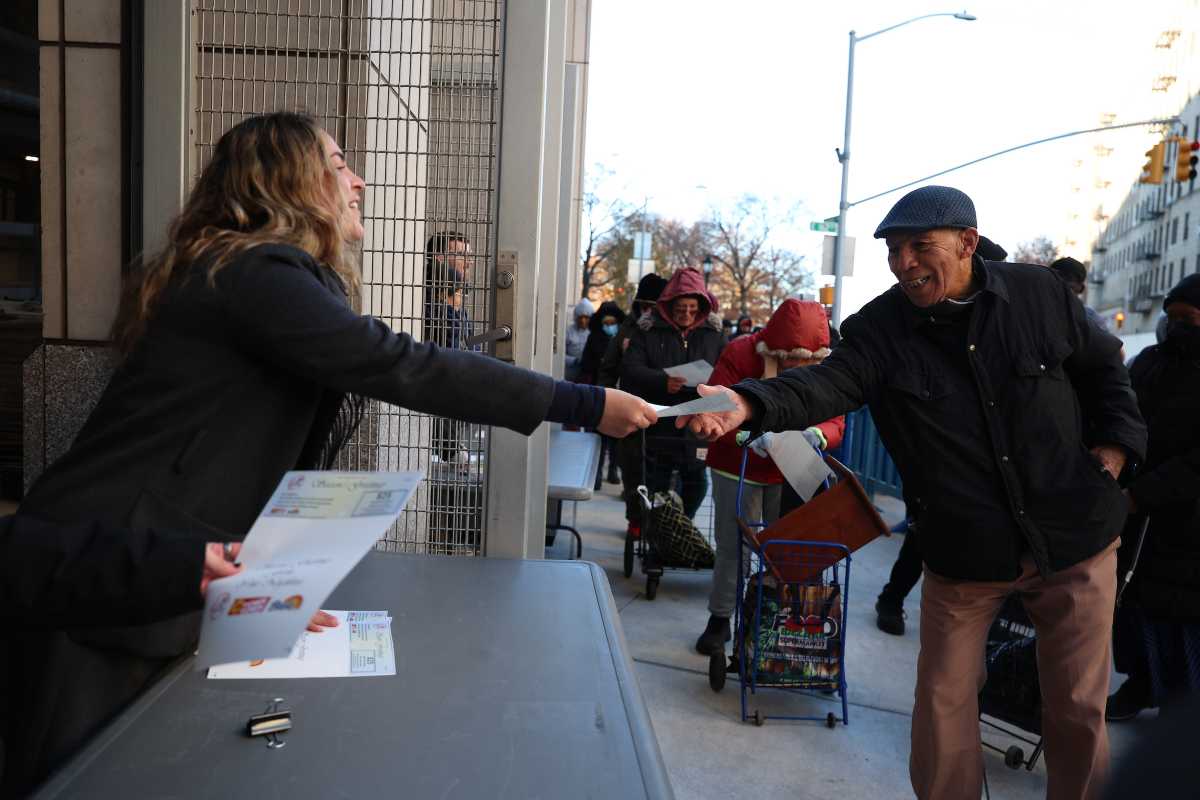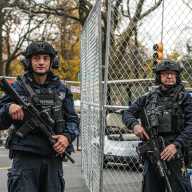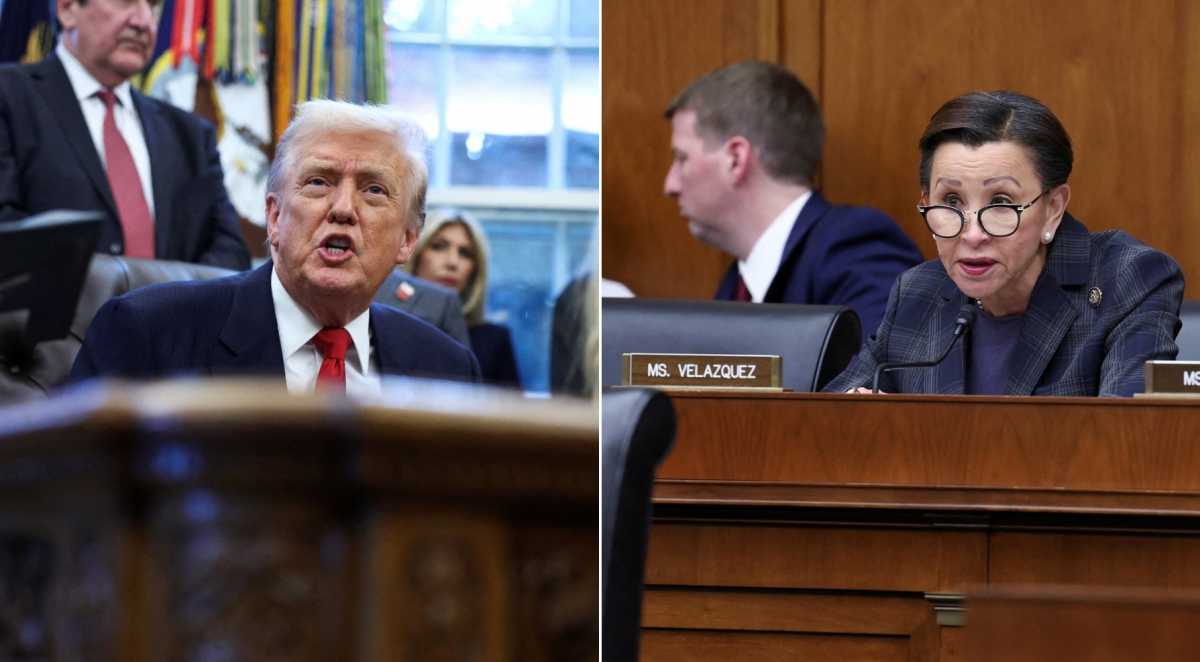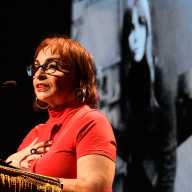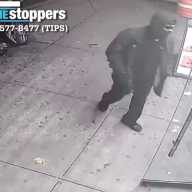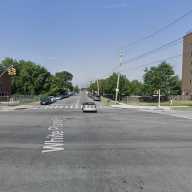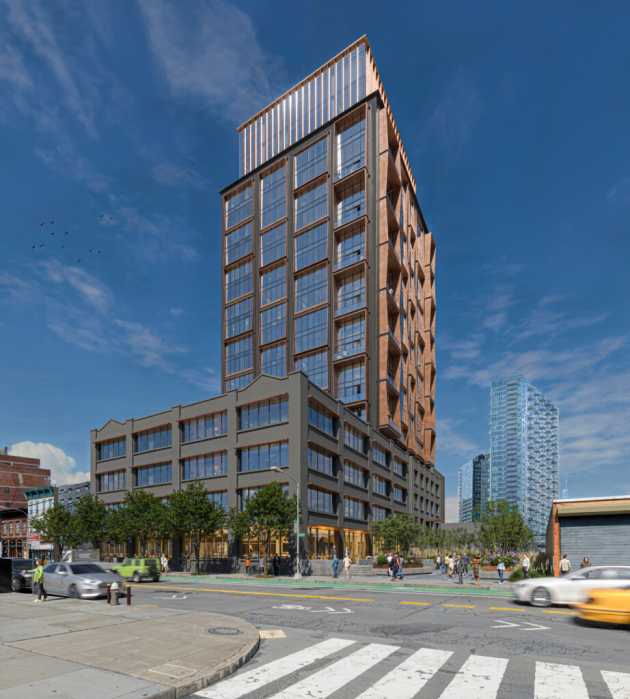By Leslie Picker
“Faster and more reliable.” That was the catchphrase the city Department of Transportation and M.T.A. officials used to describe their newest innovation for a more efficient bus system during a presentation to the Community Board 1’s Seaport/Civic Center Committee on Tuesday night.
The joint project is called Selective Bus Service, and it will run 8.5 miles on the M15 route along First/Second Aves., Allen St., Madison St., St. James Pl., Pearl St. and Water St. The city’s target date for implementation is Sept. 5, 2010. The goal is to create a speedier travel experience for bus commuters on the eastern side of Manhattan.
“Buses in New York City are very slow. They’re the slowest in the country among large cities,” said Joseph Barr, the director for transit development in the D.O.T.’s Division of Planning and Sustainability.
S.B.S. will be speedier than the M15 due to several new features, said D.O.T. and Metropolitan Transportation Authority officials. It will mandate that customers pay for their ride ahead of time at outdoor machines instead of holding up the bus swiping MetroCards inside. There will also be a bus signal priority, a special type of technology, which holds green lights for buses. Bus lane hours will be expanded and enforced to ensure freer space for bus travel, said the D.O.T. and M.T.A.
The new bus program will replace the M15 limited stop line and will have a few less stops. There are three bus stops in the C.B. 1 district that will be affected by the new bus system: South Ferry, Wall and Water Sts. and Fulton and Pearl Sts. The stops just to the north will be Madison and Catherine Sts., Grand and Allen, and Houston and Allen.
During their presentation, D.O.T. and M.T.A. officials included a study indicating that the current buses were only in motion for half of an average rider’s commute. Due to slow bus speeds, bus ridership has remained stagnant throughout the past 15 years while subway ridership has increased. Through the new program, city officials hope both the subway system and the bus system can have the reputation for fast, reliable and comfortable transit.
The first phase of the program was instituted along Fordham Road in the Bronx about one year ago. Officials said it increased ridership by 10 percent, and decreased the average bus rider’s travel time by 20 percent.
“If we could decrease travel time from 125th St. to South Ferry, I don’t see how anyone could be against that,” said Robert Marino, M.T.A. deputy director of government and community relations.
But several members of the Seaport/Civic Center Committee had their reservations. Committee member Joe Lerner said that bus lanes might cause even greater delays if people park their cars there.
“When you have police officers on every third block on First Ave., and they start ticketing cars, you’ll see how fast buses can go,” said Lerner.
Some of the committee members were concerned about the bus lanes causing greater congestion among commercial and car traffic. Others said that buses do not always stay in their lanes when an obstacle like a parked car is standing in their way. Cars in the regular lane often need to “stop short” to let buses in, said committee member Ann DeFalco.
In response, the D.O.T. officials said that they were midway through a traffic analysis of the plan, but believed there to be extra capacity along the route to host bus lanes.
Other members were concerned about fare evasion due to the outdoor paying machines and the potential for lost revenue. But to deter free riders, inspectors would walk through the buses to make sure that everyone has paid, according to the M.T.A.’s Marino.
“If you get caught without a receipt on the buses, you get a $100 ticket,” he said. “It’s the same fee as if you jump the turnstiles at the subway station.”



